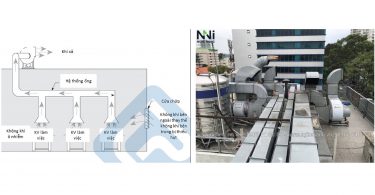How technology is integral in improving efficiency, increasing productivity and reducing waste in the construction project lifecycle.
Productivity in the construction industry has long been lagging behind the global economy and other sectors, such as manufacturing.
After all, there has been little or no change to the tools used for civil engineering over the past 20 years, whereas manufacturing has been revolutionised with Toyota’s concept of lean manufacturing.
While it is easy to see improvements in a factory environment, where millions of units of a product are produced, how can one apply lean solutions and see the results in the complex construction industry—where every building is unique, roads stretch for thousands of kilometres, and tunnels bore invisibly underground?
BIM, VDC AND IDD
Building information modelling (BIM) is an intelligent 3D model-based process with the ability to include information into its 3D elements. BIM adoption picked up quickly in Singapore after the Building Construction Authority (BCA) of Singapore made it compulsory for most construction projects.
The ability to merge data with 3D elements is what enables the move to virtual design and construction (VDC). VDC is a framework for the management of BIM models, people and processes; essentially, it entails the building of a project virtually first—fully simulating design and construction in a virtual environment—prior to actual onsite execution.
This is where the complexities inherent to the construction industry are apparent, having to manage various inputs from design consultants, clients, specialists and contractors, as well as fabricators, throughout the project cycle.
A typical workflow for a construction project involves design, fabrication, construction and maintenance. With technological advances of BIM tools, simulating these stages virtually enables visualisation of how a large-scale construction project is realised without having to build an actual prototype. Relating this back to lean concepts, being able to experience the whole construction process virtually aids in identification and elimination of wastage, which in turn improves productivity.
Considering the various parties involved in the full lifecycle of a construction project, certain information has to be transferred effectively through the different stages. Where a lapse in the transfer of information occurs, major rework may be required.
Hence, integrated digital delivery (IDD), as coined by the BCA, refers to the use of digital technologies to integrate work processes and to manage the transfer of information throughout the construction and building lifecycle—specifically digital design, digital fabrication, digital construction and digital asset delivery and management.
ENTER CIM
In Singapore, BIM has been very much focused on building construction. However, to maximise the full benefits of implementing IDD in virtual construction, particularly for the infrastructure industry, consideration has to be given to construction information modelling (CIM), a localised term used in Japan’s construction industry.
The integration of CIM with BIM gives a more holistic view of a project under construction. CIM data includes geological information, topography surveys, drone reports of visual construction progress, etc, which when overlaid and viewed together with the BIM model, allows contractors to plan ahead. The beauty of digitising such information is that it can be processed quickly by pre-set algorithms, compared to conventional paper reports.
IDD FROM DESIGN TO CONSTRUCTION
At Penta-Ocean Construction, we implement IDD—using BIM and CIM— for both building and infrastructure projects, such as Sengkang General Hospital (SKGH), Bright Hill MRT Station and Tunnel, as well as ground improvement and infrastructure works for Changi Airport Terminal 5.
 MICHELLE LEE SIU ZHI
MICHELLE LEE SIU ZHI
Digital Delivery Manager
Penta-Ocean Construction Co, Ltd
Lee’s interests lie mainly in using technology to improve work processes in construction. She has been involved in BIM implementation within Penta-Ocean for both civil and building projects. She is currently leading a centralised digital team in Singapore to establish a foundation for digital transformation within Penta-Ocean internationally. With a background in civil engineering, and experience in architectural and MEP gained from involvement in hospital projects, she is able to provide insights for bridging the gap between technology and engineering. She was involved in BIM management of the Sengkang Hospital project, as well as introducing the use of a 3D geological model for civil projects.
To read the complete article, please download the Construction Plus App on the App Store or Google Play.

 Malaysia
Malaysia Hong Kong
Hong Kong Singapore
Singapore Indonesia
Indonesia ประเทศไทย
ประเทศไทย













